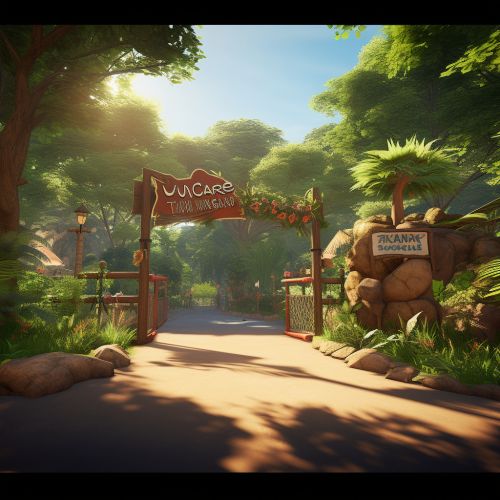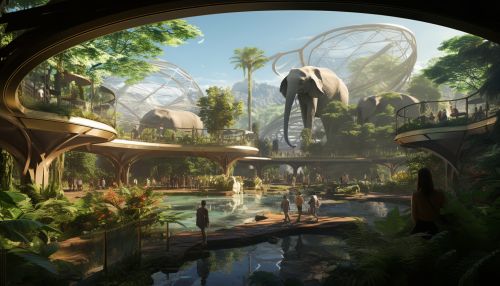Zoological Gardens
Overview
A zoological garden, often referred to as a zoo, is an establishment where animals are kept within enclosures, displayed to the public, and in some cases bred for conservation purposes. Zoos have evolved significantly over the years, from menageries for royal entertainment to scientific institutions for studying and conserving wildlife.


History
The concept of zoos has been present in human civilization for thousands of years. The earliest known instance was discovered in Hierakonpolis, Egypt, where a menagerie was maintained by a ruler as early as 3500 BC. These early establishments were far from the modern concept of zoos, as they were primarily for the private pleasure of the wealthy and powerful.
The modern zoo concept began to take shape in the 18th and 19th centuries, with the establishment of public zoos in major cities around the world. The London Zoo, opened in 1828, was one of the first to be opened to the public and aimed to promote animal conservation and education.
Purpose and Function
Zoos serve several purposes. Primarily, they provide a means for the public to observe and learn about animals from all over the world. This educational aspect is crucial, as it fosters an appreciation for wildlife and the importance of conservation efforts.
Zoos also play a significant role in scientific research. Zoologists and other scientists use zoos as bases for studying animal behavior, genetics, and diseases. This research can contribute to conservation efforts in the wild, especially for endangered species.
Conservation is another critical function of modern zoos. Through captive breeding programs, zoos can help to increase the population of endangered species. Some zoos also participate in reintroduction programs, where animals bred in captivity are released back into their natural habitats.
Animal Welfare
Animal welfare is a significant concern in zoos. There has been ongoing debate about the ethical implications of keeping animals in captivity. Critics argue that zoos deprive animals of their natural behaviors and habitats. However, many modern zoos strive to create enclosures that mimic the animals' natural habitats as closely as possible.
Zoos also have veterinary staff on hand to provide medical care for the animals. These professionals also monitor the animals' diets and ensure they are getting the necessary nutrition.
Design and Layout
The design and layout of a zoo can greatly affect the experience for both the animals and the visitors. Traditional zoos often used cages with bars, but modern zoos have moved towards more naturalistic enclosures. These can include moats, glass walls, or mesh to separate the animals from the visitors while still allowing for clear viewing.
The layout of a zoo is also important for visitor navigation. Zoos often group similar animals together, such as all the big cats or all the primates. Some zoos also arrange their animals geographically, with separate areas for African, Asian, and American animals.
Future of Zoos
The future of zoos is likely to continue evolving, with a greater emphasis on animal welfare, conservation, and education. There is also a trend towards creating more immersive and interactive experiences for visitors. This can include walkthrough exhibits, where visitors can walk through an enclosure, and interactive feeding or training sessions.


